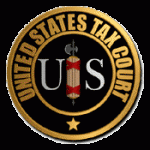 In what may be the last word on Kaufman v. Commissioner, the Tax Court sustained the IRS’s complete disallowance of charitable deductions claimed for the donation of a façade easement. The case returned to the Tax Court on remand from the First Circuit Court of Appeals to determine the value of the easement and the application of accuracy-related penalties.
In what may be the last word on Kaufman v. Commissioner, the Tax Court sustained the IRS’s complete disallowance of charitable deductions claimed for the donation of a façade easement. The case returned to the Tax Court on remand from the First Circuit Court of Appeals to determine the value of the easement and the application of accuracy-related penalties.
The taxpayers’ owned a 150 year-old row house in a designated historic district in Boston, Massachusetts subject to the South End Landmark District Residential Standards (“South End Standards”). In 2003, taxpayers’ entered into an agreement with the NAT to donate a façade easement over the property. The taxpayers contacted an appraiser, recommended by NAT, who appraised the value of the easement. The appraisal concluded that the total loss of value, including the easement and the value of the unused development rights, was $220,800. The taxpayers deducted that amount on their 2004 and 2005 tax returns as a charitable donation of a qualified conservation easement. The Commissioner challenged the deductions with a statutory notice of deficiency.
In Kaufman v. Commissioner, 134 T.C. 182 (2010) (Kaufman I), the Tax Court ruled for the IRS in a motion for partial summary judgment. The Court held that the conservation easement failed to satisfy the “in perpetuity” requirements of the Treasury Regulations. The Court then issued a second opinion making additional findings, disallowing other items and imposing penalties on the remaining issues (Kaufman II). The taxpayers’ appealed. The U.S. Court of Appeals for the First Circuit rejected the Tax Court’s ruling that the taxpayers’ mortgage lender agreement undercut the regulation’s “in perpetuity” requirement as a matter of law (Kaufmann III) and remanded for further consideration of the taxpayers’ charitable contribution deductions under the facts.
The primary issue on remand was the proper valuation of the façade easement. The taxpayers’ valuation expert used a sales comparison analysis with data from three comparable properties. Using the before-and-after method, he determined that the value of the property was $1,840,000 before the grant of the easement. The expert used a “method unique to him and not a generally accepted appraisal or valuation method” to determine that the total value of the property was reduced by 12% or $220,800 when encumbered by the façade easement.
The IRS’s expert discredited the taxpayer’s valuation stating that it was “the fruit of an inappropriate valuation methodology employing a wholly unsupported adjustment factor.” Notably, both the IRS expert and the taxpayer’s expert agreed, “neither the preservation agreement nor the preexisting restrictions hamper the potential for developing the property to its highest and best use…as a single family home.”
The Tax Court gave no weight to the taxpayers’ expert because of his close relationship with NAT, his limited experience appraising façade easements, and his use of a “unique” valuation methodology. The Court also conducted its own comparison of the façade easement restrictions and the South End Standards. The Tax Court found that the agreements were “basically duplicative” and there were no significant additional restrictions placed on the property by the façade easement.
The Court held in favor of the IRS finding that the façade easement had no fair market value when conveyed to NAT. The Tax Court also upheld the IRS’s imposition of accuracy-related penalties.
Read the full opinion here: Kaufman v. Commissioner, T.C. Memo. 2014-52

